

William Stopford
Every car discontinued in Australia in 2025
16 Hours Ago
In a world where change seems endless and unrelenting, there’s a continuity about the new E-Class that soothes the soul.
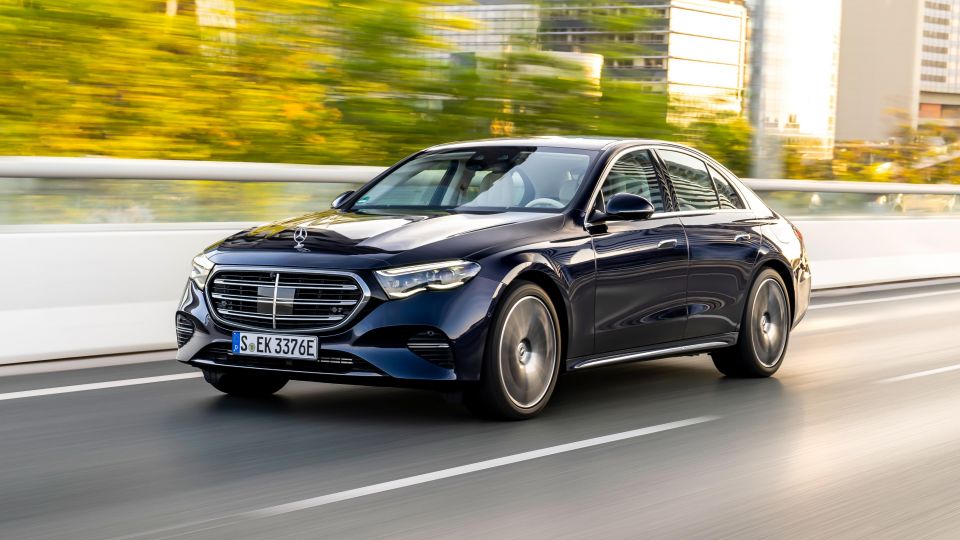


Quickly see how this car stacks up against its competition. Select any benchmark to see more details.
Where expert car reviews meet expert car buying – CarExpert gives you trusted advice, personalised service and real savings on your next new car.
Though Mercedes-Benz these days offers more SUVs and people movers than cars, the E-Class Sedan still in many ways defines the brand.

The engineers who created the W124 E-Class Sedan in the 1980s, one of the Three Pointed Star’s touchstone cars, might be aghast at the glittery decoration adorning its 21st century successor – both inside and out. But, they would recognise the effortless competence of its powertrain, the studied confidence of its chassis, and the quiet efficiency with which its technology lends the driver a helping hand.
The 2024 Mercedes-Benz E-Class, codenamed W214, is built on the same MRA2 platform architecture as the car it supersedes, and under its redesigned exterior is a lot of the same powertrain and chassis hardware. Among the key hardware changes however, has been a 20mm increase in the wheelbase, and the availability of rear-wheel steering which reduces the turning circle by up to a metre.
In terms of the exterior design, crisp character lines over the wheels, a new front-end graphic that links the grille and the standard LED headlights in a black panel, and new tail lights with a clever three-pointed star graphic, give the E-Class with subtly more muscular road presence. Details such as flush door handles and carefully sculpted front and rear bumpers have helped deliver a drag coefficient of 0.23. Available wheel sizes range from 18 to 21 inches.
The real story of the new Mercedes-Benz E-Class, however, is not so much about hardware, but software. This car is chock-full of software-driven technologies and functions designed to make both driver and passengers feel more connected, comfortable, and in control.
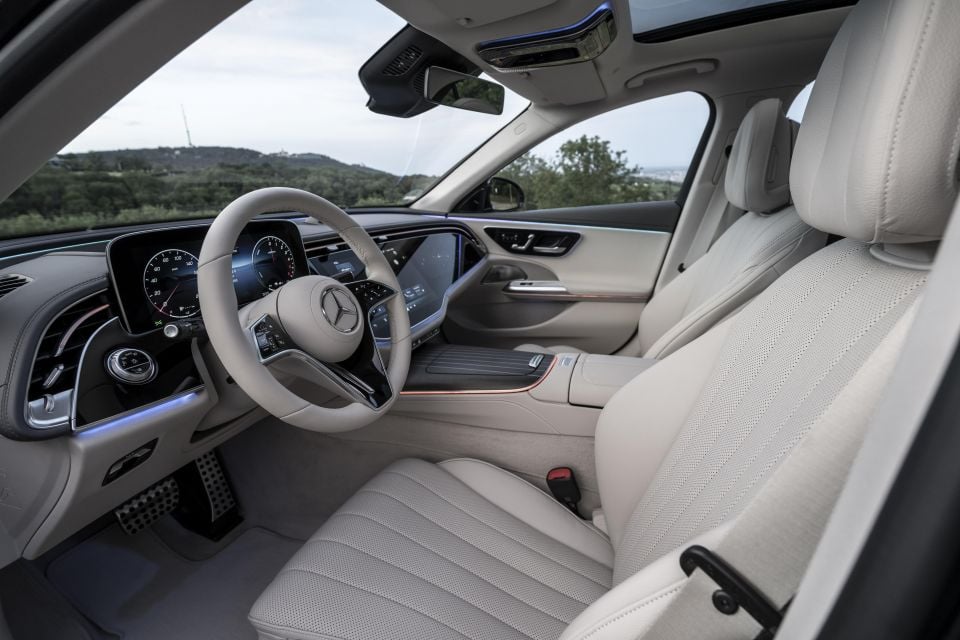
For example, a digital key function that is part of an upgraded Keyless Go package now enables the new E-Class to be unlocked and started with a compatible iPhone or Apple Watch. What’s more, the main user of the car’s Mercedes me app can allow up to 16 other people the right to either unlock or drive the car.
A new compatibility layer added to the upgraded MBUX user interface system, the functions of which now run off a single processor that delivers improved performance and higher data speeds, allows the installation of third-party apps.
Mercedes engineers have even built into the new E-Class the digital foundation of an AI system that in the future will learn which comfort systems drivers repeatedly use in certain conditions, and automatically activate them.
For now, E-Class owners can use templates or create what Mercedes-Benz calls ‘routines’ to link functions and conditions. For example, the E-Class can be set up to switch on the seat heating and turn the ambient lighting to warm orange if the interior temperature is below 12 degrees C.
Apart from the powerful and popular AMG models, the W214 versions of which have yet to be revealed, Mercedes-Benz Australia currently offer the E-Class Sedan in just two trim levels – the E 200, which has a 2.0-liter four-cylinder mild-hybrid powertrain, and E 300e, which combines the 155kW 2.0-litre four with a 90kW e-motor powered by a 13.5kWh battery.

Mercedes-Benz Australia has yet to announce which models of the W214 are coming to Australia, or pricing.
But given the increased levels of available technology, it’s likely W214 models will be more expensive than their W213 counterparts.
That suggests base prices closer to $120,000 for the E200, and $145,000 for the E300 e.
Buy your new car without the stress. It's fast, simple and completely free.

Great service from Travis and team, second time I have used this business would not hesitate to recommend them to anyone
Craig C.
Purchased a Ford Ranger in Sunshine Coast, QLD
CarExpert helped Craig save thousands on his Ford Ranger, now let us save you on your next new car.
Find a dealIn addition to being slightly roomier, particularly in the rear, the W214 E-Class debuts Mercedes-Benz’s new MBUX Superscreen.
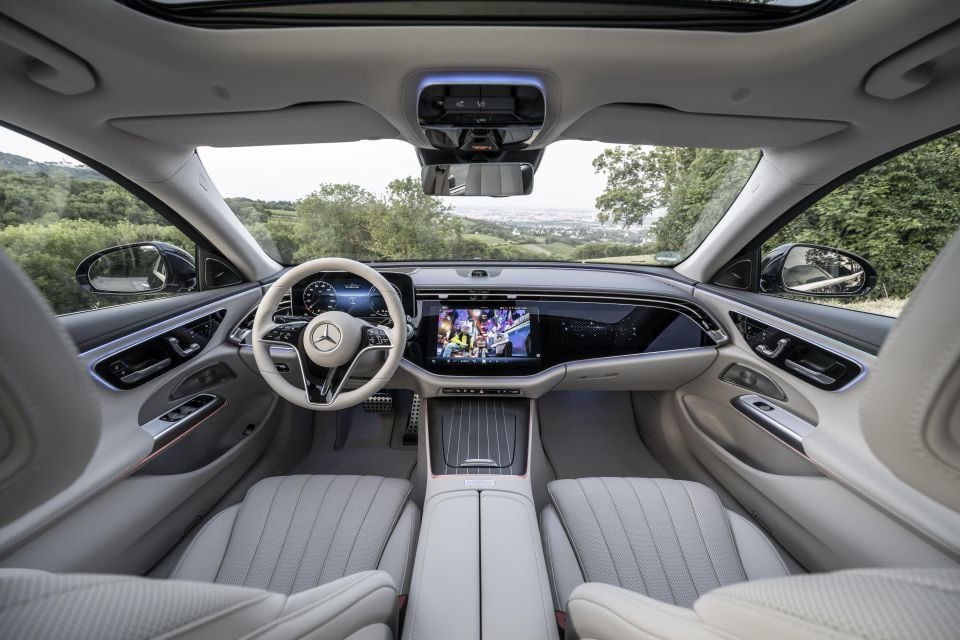
Available as an option in selected markets, the Superscreen covers the right two-thirds of the dash immediately adjacent to the new vertical instrument panel and features a 14.4-inch central touchscreen display and a 12.3-inch display for the front passenger under a single glass sheet.
The Superscreen is no gimmick, says Mercedes-Benz CEO Ola Källenius: “We’re absolutely convinced customers in China and some of the Asian markets want to turn their car into an entertainment centre, a gaming centre, a work centre, a relaxation centre,” he says.
“And we can see that’s also starting to take off in Western markets. So, from this point forward, when we launch new vehicle architectures, every Mercedes will have the option of a pillar-to-pillar screen.”

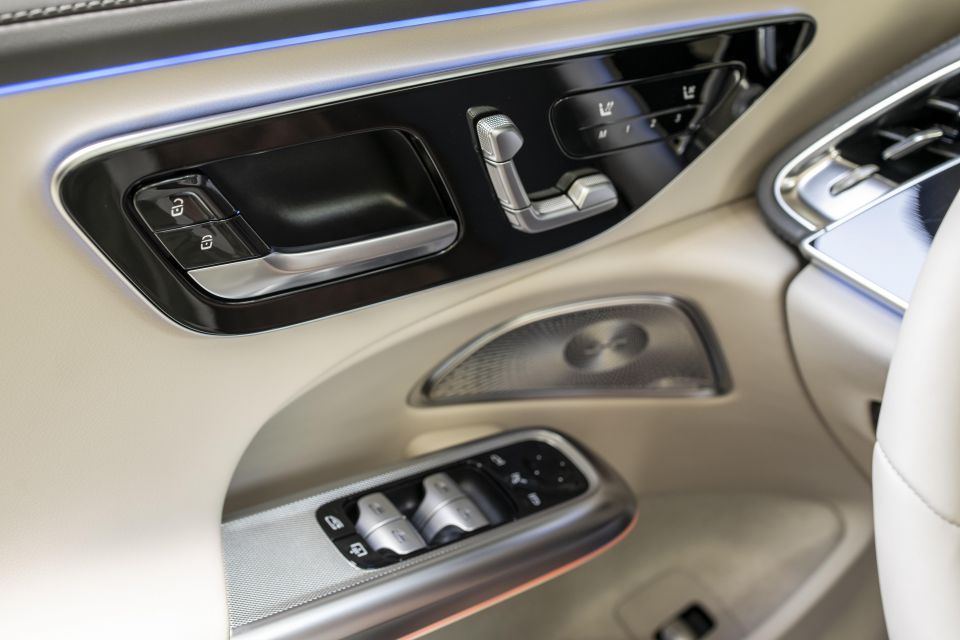
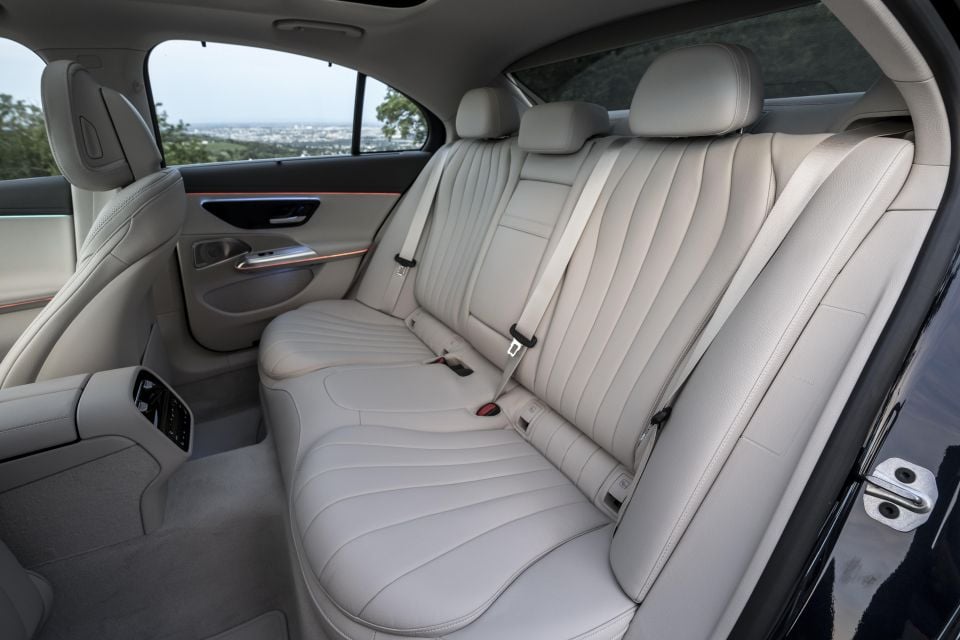
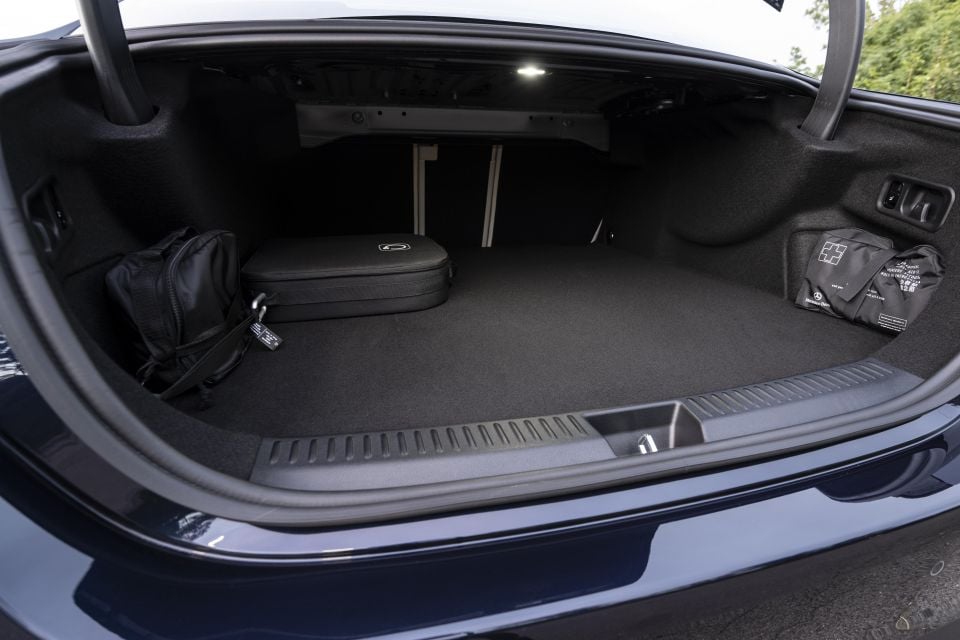
The Superscreen package includes a camera mounted on top of the dash that faces into the cabin, and the ability of MBUX to run third-party apps means you can use it to take part in Zoom video conferences when the car is stationary.
If the car’s moving, you can still take part in the Zoom meeting, but only using an audio feed.
The screen in front of the front passenger will continue to stream movies and videos while the new E-Class is in motion, but clever digital technology automatically masks what’s on the screen from the driver.
The W214 E-Class is launching in Europe with a single-spec 3.0-liter six-cylinder petrol engine, a 2.0-liter four-cylinder petrol engine available with three different power and torque outputs, and a single-spec 2.0-liter four-cylinder diesel. All powertrains are either mild-hybrid or plug-in hybrid.
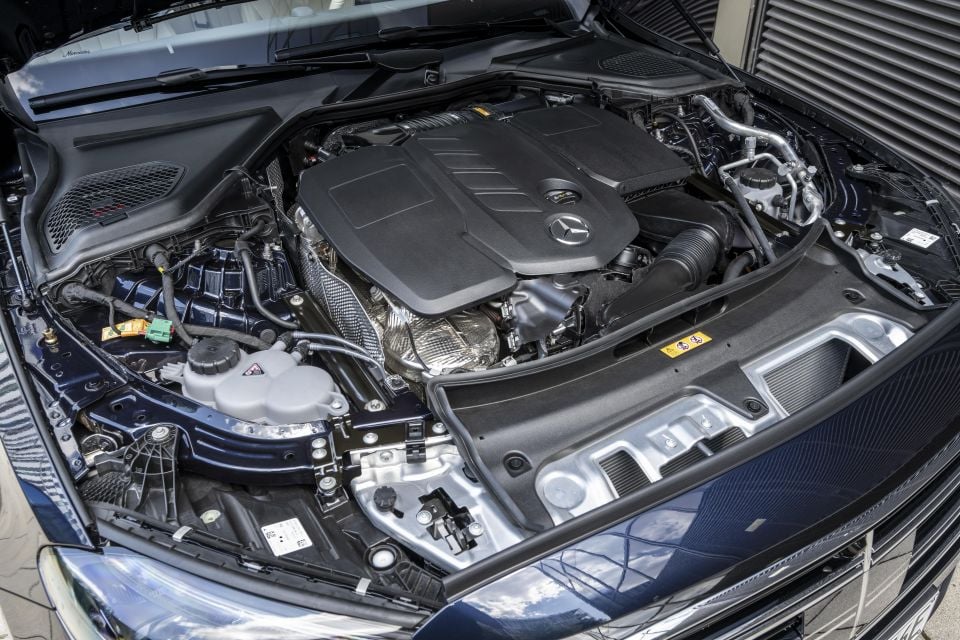
The mild-hybrid engines have a 48V integrated starter-generator between the internal combustion engine and the nine-speed automatic transmission that now provides an additional 17kW and 205Nm on demand.
The plug-in hybrids, meanwhile, have a 95kW/440Nm e-motor fed by a big new 25.4kWh battery that Mercedes says will deliver a pure electric driving range of over 100km.
Despite a slight bump in the internal combustion engine’s output – from 145kW to 150kW – and the 48V integrated starter generator pumping out 7kW more, the W214 E 200 is slightly slower to 100km/h than the outgoing model: Mercedes-Benz quotes a 0-100km/h acceleration time of 7.5 seconds for the W214 versus 7.3 seconds for the W213.
Fuel economy has improved, however; the combined consumption on the WLTP test cycle of 7.3 to 6.4L/100km compares favourably with the W213’s 8.4 to 7.1L/100km.
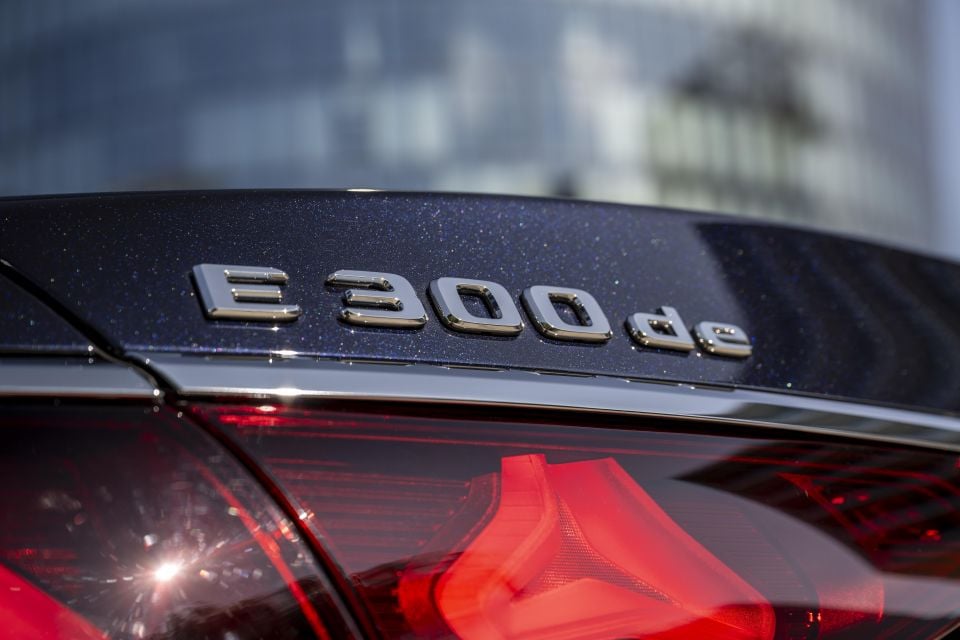
The significant increase in electric driving range – up from 51km to 115km on the WLTP test cycle, says Mercedes – makes the new E 300e quite a compelling proposition.
It’s not just that you can go further on pure electric power: In Hybrid mode the powertrain automatically shuffles the power flows from the internal combustion engine and the e-motor to ensure optimal efficiency. The bigger battery gives the system a bigger ballroom in which to dance this fuel-saving dance.
How does the new Mercedes-Benz E-Class drive? In a word, effortlessly.
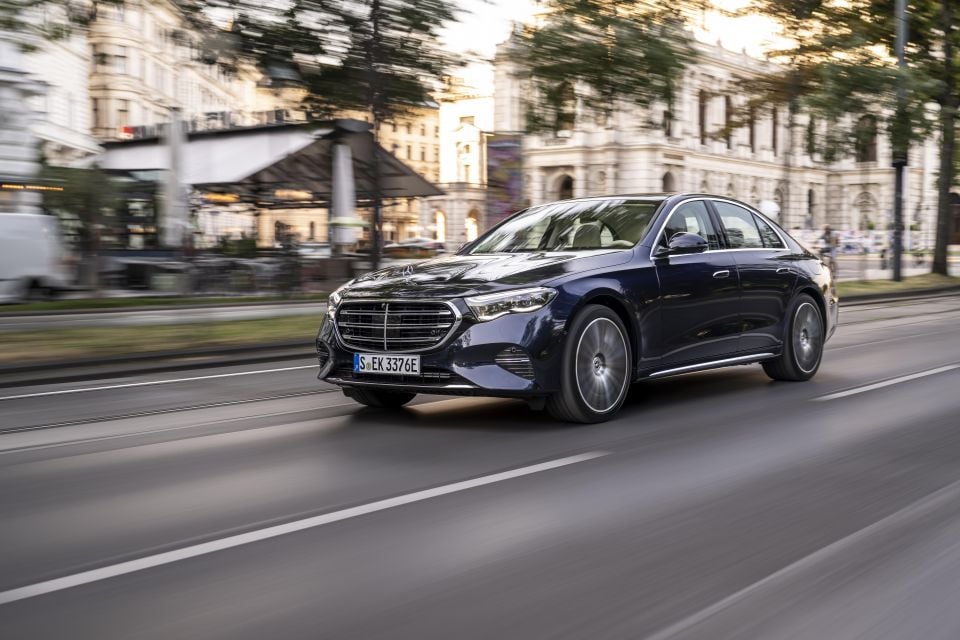
The Driving Assistance Plus package available in Europe endows the new E-Class with almost Level 3 autonomous driving capability.
You must keep your hands lightly on the steering wheel, but the with adaptive cruise control activated, the package’s active lane change assist automatically guided our test car into the overtaking lane on a dual-carriageway highway when it came upon a slower-moving vehicle, checking for faster traffic coming from behind, and activating the indicators.
The good news is, if you prefer to do all the driving yourself, the W214 displays the confident capability that has been the hallmark of the very best E-Class models over the past four decades. This is a car that will happily waft around the suburbs yet stop and steer with composed authority when you want to hustle it down a winding country road.
We weren’t able to drive an E 200 or E 300e to get some back-to-back impressions with the current Australian line-up, but we did get to sample the six-cylinder E 450 and the intriguing four-cylinder E 300de diesel plug-in hybrid.
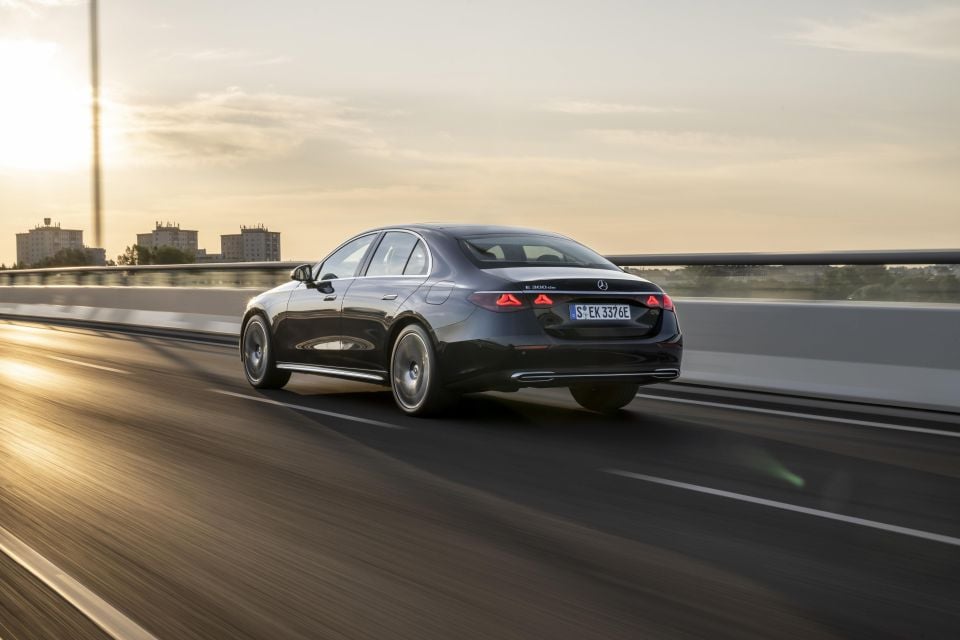
Both cars were of course highly specced, with rear-wheel steering (which comes packaged with air suspension), 21-inch and 20-inch wheels respectively, and the show-stopping MBUX Superscreen inside.
The E 450’s six-cylinder mild-hybrid powertrain is smooth and punchy, and though you can choose to digitally augment the sound to make it rumble like a V8, it’s best left alone to emit only a muted snarl under hard acceleration.
That’s because the rest of the car is so quiet. Even on the low-profile 21-inch wheels and tyres, this E-Class is as quiet in the cabin as an S-Class.
The E 300de’s powertrain is arguably more impressive, not the least because the car is scarcely any louder inside than its six-cylinder sibling.
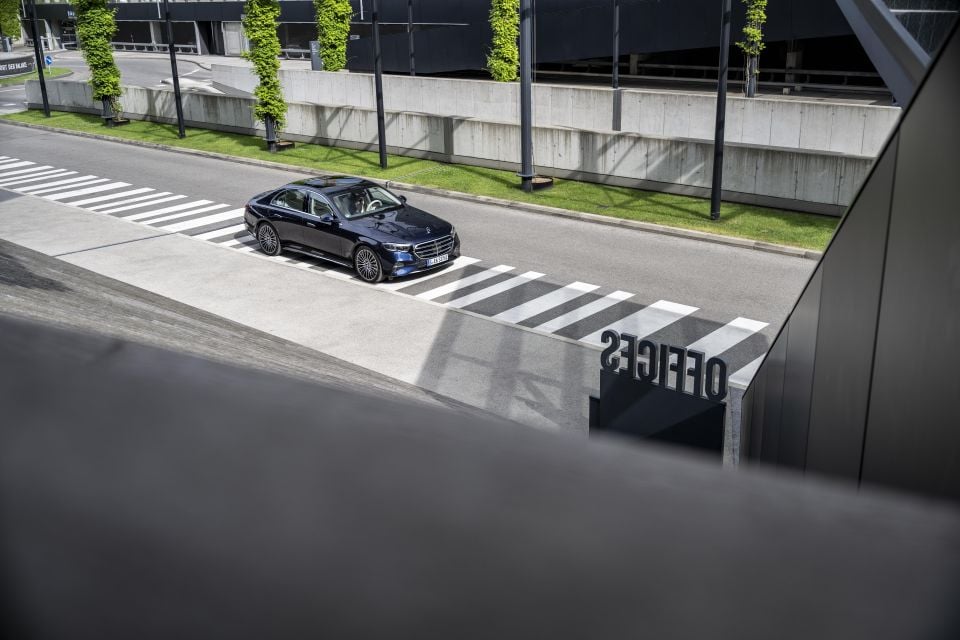
The little diesel’s growl barely penetrates the serene cabin, allowing you to enjoy the top-spec, 730-watt Burmester 4D stereo. When running in pure electric mode, it’s almost as quiet as a Rolls-Royce. When running in Hybrid mode, the transitions between internal-combustion and electric power are almost imperceptible.
The ride in the default Comfort mode is plush; selecting Sport mode gently reigns in the secondary body motions without making the car feel harsh or edgy.
There is no Sport+ mode: This E-Class doesn’t need it, and it would add nothing to its appeal. The optional rear-wheel steering not only improves manoeuvrability in tight car parks, but also helps whip the car around tight hairpins.
No matter how hard you push it, the E-Class remains utterly unperturbed.
As you’d expect, the list of standard equipment on the new E-Class is comprehensive.
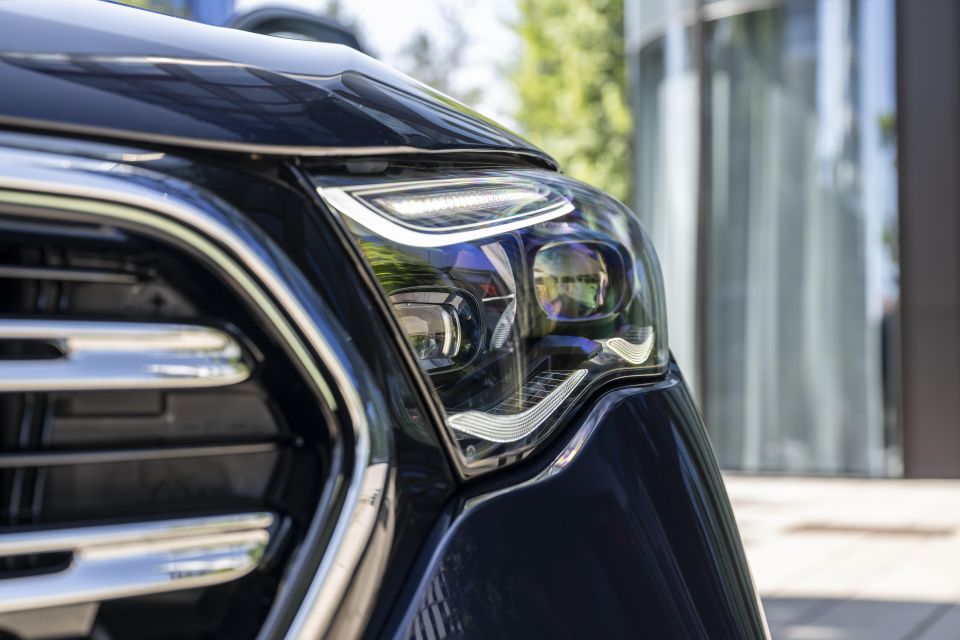
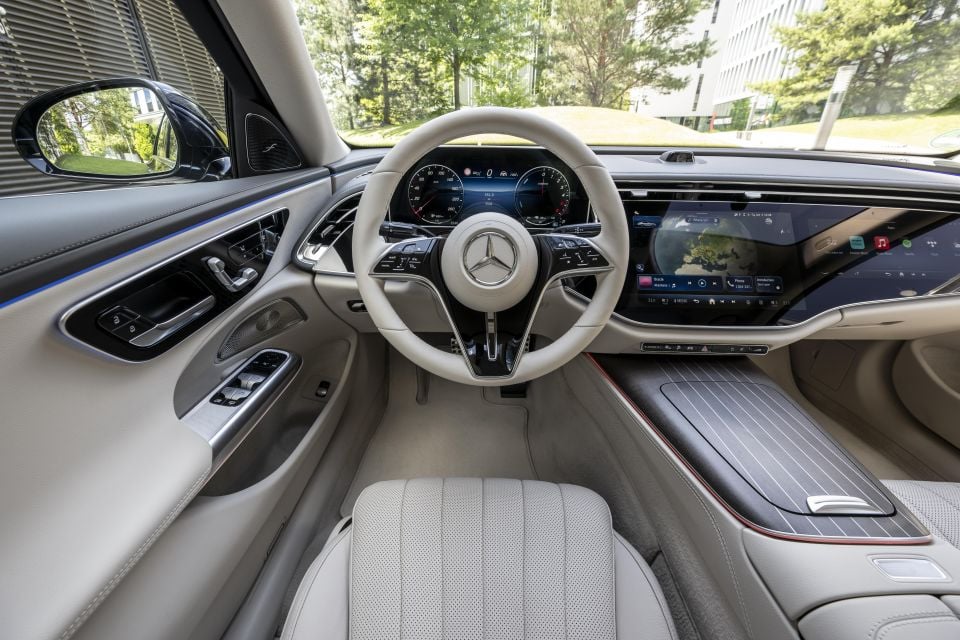


Standard equipment in Europe includes:
Mercedes-Benz has long been a world leader in safety research and development, and the new E-Class continues the brand’s tradition of offering cutting-edge passive and active safety features.
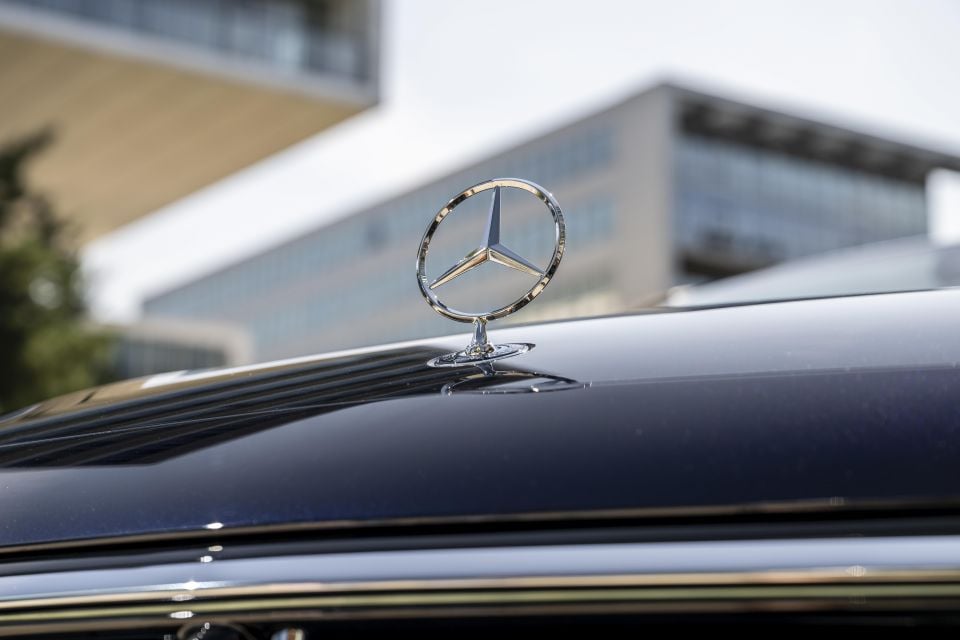
Standard safety features include:
Mercedes-Benz Australia currently offers a five-year, unlimited-kilometre warranty.
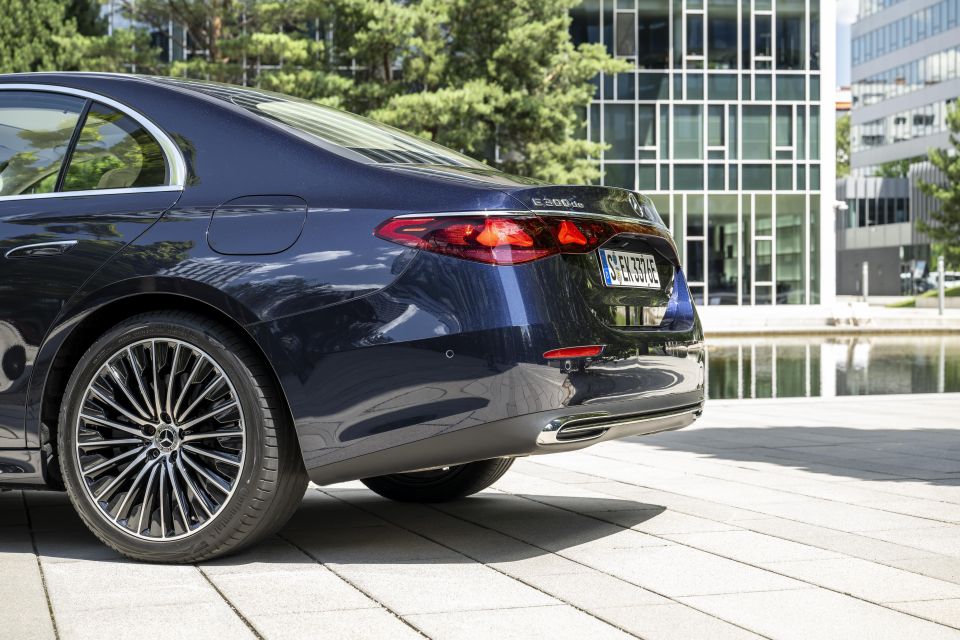
Where expert car reviews meet expert car buying – CarExpert gives you trusted advice, personalised service and real savings on your next new car.
Service intervals are set at 25,000km or yearly – whichever occurs first – and Mercedes-Benz offers upfront service plans covering up to five years.
A three-year service plan for the outgoing E-Class costs $3325, a four-year plan $535, and a five-year plan costs $6800.
There’s something wonderfully calming about the new E-Class.

While some of its rivals, most notably BMW, seem determined to build cars that confront and challenge conventional notions of style and luxury, this mid-size Mercedes exudes a subdued elegance.
Mercedes-Benz has built sedans like this since 1946 – more than 16 million of them so far – and although fashions and technologies have evolved, the fundamentals have not.
The 2024 Mercedes-Benz E-Class is a comfortable and accomplished sedan that feels built to last. In a world where change seems endless and unrelenting, there’s a continuity about this car that soothes the soul.

Click the images for the full gallery
Where expert car reviews meet expert car buying – CarExpert gives you trusted advice, personalised service and real savings on your next new car.


William Stopford
16 Hours Ago


CarExpert.com.au
4 Days Ago


Damion Smy
5 Days Ago


Damion Smy
9 Days Ago
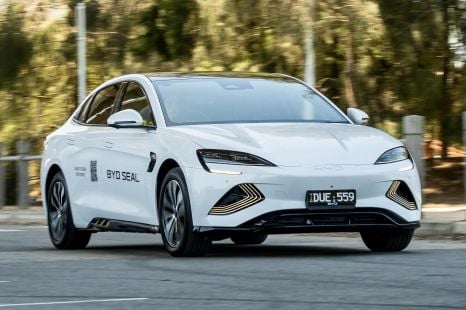

Max Davies
13 Days Ago
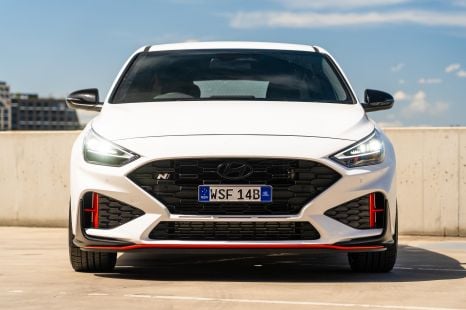

William Stopford
19 Days Ago